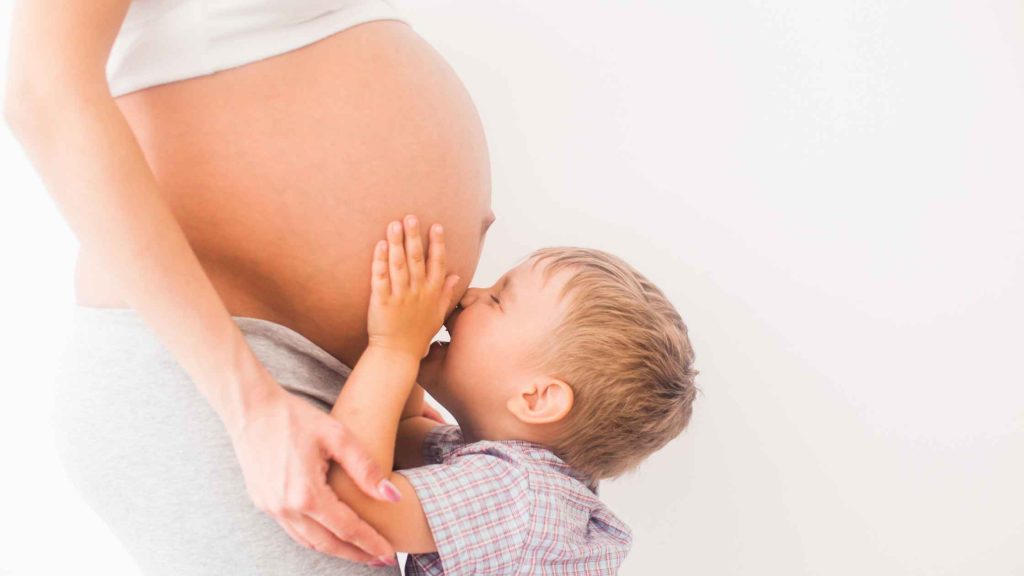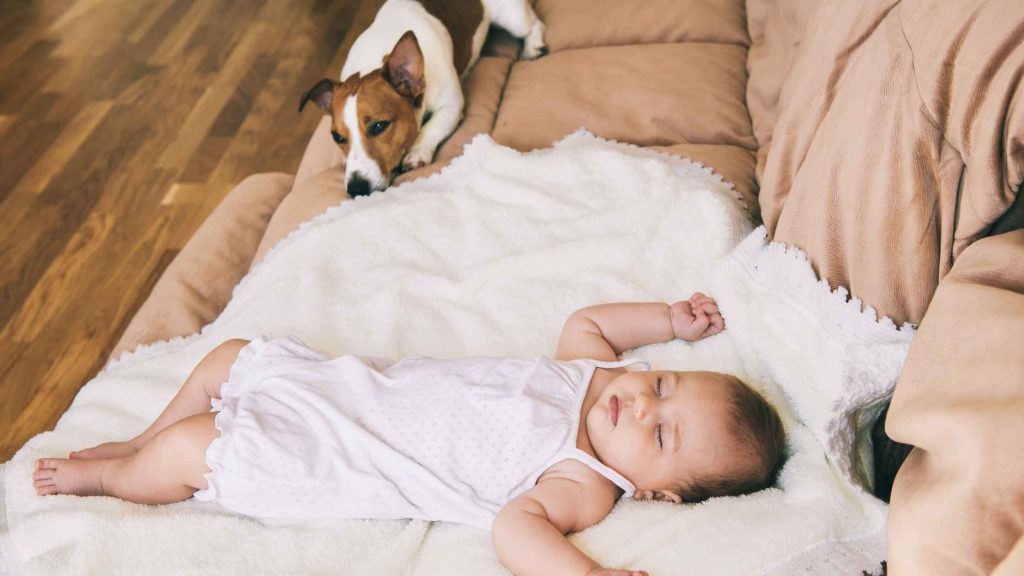
How to Introduce New Baby Sibling: Guide to Help Your Older Child Deal With Change
- Created:
22. 11. 2022 - Updated:
16. 11. 2022

Your family, as you know it, is about to change. Within the many new relationships that will need to be negotiated, the developing bond between the new baby and its older sibling is a work-in-progress and will be one of the most important and challenging tasks that you will ever have as a parent. How introduce new baby sibling? Continue reading to learn strategies and tips to help your older child adjust.
The Importance of the Sibling Bond
In the long run, a healthy relationship between siblings can be a source of support, teaching empathy and prosocial behaviors such as listening, waiting, sharing, and compromising.
An unhealthy relationship between siblings can be equally powerful and can result in low self-esteem, a tendency toward competitiveness, and an inability to communicate effectively with peers.
The Best Age Introduce New Baby Sibling
When is the best age to introduce the new baby sibling?
There are both pros and cons when considering the age difference between siblings.
For example, a smaller age gap (1-2 years) means that your children will have more in common. It also could be exhausting to satisfy the needs of two small children at the same time.
A larger age gap means less work for the parents, and potentially, the older sibling is more able to help with the baby.
Either way, with sensitive caregiving, siblings of all ages can be encouraged to listen, communicate, share, cooperate, and love one another.

Preparing the Older Sibling: During the Pregnancy
During pregnancy, you and your family are going through changes. No matter what the age, a child will sense that things are different; your child will notice that your body is changing as are your abilities to lift, to carry, and to play.
Involve your baby in the process of pregnancy and introduce new baby sibling while it is still inside.
For children of all ages, encourage them to sing and to talk to the unseen baby growing inside, to touch your stomach in a way that is comfortable to you, and to try and feel the baby move in utero. For all ages, it helps to use books and stories.
To all interested children, you can give words to the pregnancy process. Some examples might be: “This is your baby sister/brother in here.” “This is where the new baby is growing.”
How to Introduce Toddler to New Baby
The toddler (12 months – 24 months) is preverbal or has a small, developing vocabulary. This child will not be able to ask questions or to express insecurities and doubts in words, but you can find soothing alternatives, satisfying positions for cuddling, and calmer games to play together.
Introducing New Baby to 1 Year-Old
The newly verbal child (24 months – 36 months) might express thoughts and observations by using one- and two-word sentences to comment on your growing stomach. This child may demand physical routines that are no longer comfortable for you, like lifting and carrying.
Introducing New Baby to 3 Year-Old
Your 3–5-year-old child is comfortable talking and can ask questions about your pregnancy and the changes in your body. Be sure to listen carefully and answer only the questions that the child is asking. We adults tend to over explain.
Preparing 6 Year-Old for New Baby
Your six-year-old is going to want to be a part of everything. You can invite him to help you with the baby, and you can give him special jobs, letting him know that you trust him and that he is competent and responsible.
You can encourage him to tell his new little sibling a story or to sing songs. Make sure that you notice your 6-year-old’s feelings, and that you take the time to talk about them.
Spend some time alone with your 6-year-old, and encourage him to spend time with the baby, doing things that older siblings like to do. Don’t be surprised if your 6-year-old will want to spend some time on his own.
4 activities that will help introduce new baby sibling:
- decorate the baby’s new space together
- help the child choose a gift to give to the baby
- show the child pictures or videos of how you looked during your pregnancy with him or her
- emphasize that this is “our” new baby, and that the whole family is preparing a place for this new addition to the family.
Helping the Older Sibling to Adjust: After the Birth
After the baby is born, be sure to include the older child in all the excitement.
Those first days and weeks are the time to establish new habits, to reinforce old routines, and to teach appropriate behavior. If a visitation to the hospital is appropriate, maybe the older sibling would like to draw a picture or bring a present to the new little sibling.
How to Introduce New Baby Sibling
When you bring your new baby sibling home from the hospital, be sure that your older child is prepared for the exciting arrival.To be perfectly prepared to introduce new baby sibling, take into consideration the age of the older child,the level of understanding, verbal abilities, and the state of the child (Is he or she tired or hungry?) Be sensitive to your child’s reaction. Be patient. This is a big day for everyone!
8 Ways to Prepare Your Child for a New Sibling
1. Greet your older child first
When you come home from the hospital with the new baby put the new baby down and introduce the older child to the baby. Not the other way around. There could be welcome presents awaiting both children. Help your older child be a host to the younger sibling; help the older child feel important.
2. Maintain established routines
To help the child feel that life is still somewhat predictable and can be trusted. Weigh the importance of creating additional changes in the child’s life during this critical juncture. Be sensitive to the timing.
3. Make necessary changes before the baby born
If changes must be made, try to make them before the baby is born. For example, toilet training, transitioning to a big bed, or using a cup instead of a bottle can be encouraged in the months before the baby is due.
4. Involve the older child in caregiving activities
This will strengthen the child’s sense of belonging, self-worth, and self-pride. A curious older sibling might want to watch the baby nurse from close range or might be interested in the inside of the baby’s diaper. Taking age and ability into consideration, involve the older child as much as possible. Patiently explain to your child what you need done and how you want your child to do it. Support your older child in any way possible to ensure a positive experience all around.
5. Help the older child hold and touch the new baby,
Teach appropriate behavior and complimenting successes: “You touched your baby sister so gently on her hand.”
6. Help the older child communicate verbally and nonverbally with the baby:
- “You can look into her eyes and tell her that you love her.”
- “Do you want to tell your brother what you did today?”
- “Would you like to sing a song to your sister?”
7. Help the older child interpret the responses of the baby:
- “Look, she is so happy!”
- “Let’s see if your sister likes that.”
- “Do you think that he likes that song?”
8. Put your older child at the center of positive attention,
Showing and explaining that you still love him or her more than ever. Find ways to spend quality, one-on-one time together.

Emotional Reactions of an Older Sibling
During pregnancy, the child may be excited about the unknown baby, but after the birth, the child will probably develop mixed emotions.
Older siblings might feel both intense affection as well as anger and jealousy at having to share the attention of their parents.
Siblings who are older might be worried that their parents don’t love them anymore, or that they love them less than they love the baby.
Older sibling’s reactions might include:
- temper tantrums
- physical anger toward the baby or the parents
- verbally expressed anger toward the baby or the parents
- frustration and crying
- clingy behavior
- inability to wait
- refusing to be independent
Reacting to Difficult Behavior
All behavior has meaning. What is the meaning of your child’s behavior? Before you react, ask yourself what need the child is trying to express.
Your reactions might include:
- Using a gentle touch while saying, “I know that it is hard to wait while I am nursing your baby brother. As soon as he is done, we can do that puzzle together.”
- Saying to the baby, “Baby please wait, your big sister needs me,” so that the older child doesn’t feel like they are always coming second to the baby.
- Giving the older child consistent boundaries while giving the space needed to accept the new baby. Do not pressure or guilt the older child into “loving” their little sibling.
- Helping the older child transition to an acceptable activity that includes the baby.
- Moving on to another activity that does not involve the baby.
- Showing the older child what not to do by showing him what he can do. Express the rule in words: “It’s great to touch the baby on her hands or on her tummy.”
What is Regression?
Regression means that your child is exhibiting behavior that is characteristic of younger children.
The older child might intuitively feel that acting like a baby means receiving the attention that the baby is receiving. For example:
- the older sibling might want to use a bottle instead of drink from a cup
- the older sibling might insist on talking in baby talk instead of using words
- the older sibling might stop using the potty and insist on using a diaper
How to React to Regression?
It doesn’t usually help to encourage the child to act like a “big boy” or a “big girl” because this does not satisfy their need.
You can show your older child that you understand and accept his or her emotional reaction to the new baby and that you are there to help manage those big feelings.
Instead of reinforcing the behavior by giving it attention, you can sometimes ignore the regressive behavior.
You can satisfy their request. For example, you can give them a bottle or take them in your arms like a baby. They don’t actually want to be a baby; they just want the benefits of being a baby. If they are calmly given attention, they will soon return to their normal age-appropriate behavior.
10 Year-Old Jealous of New Baby
Although a 10-year-old seems mature and fairly grown, it is normal for the child to feel jealousy and resentment toward the new baby. This jealousy might express itself in aggressive behavior toward the parents or toward the baby or in regressive behavior like wetting the bed or talking like a baby.
You can reassure your 10-year-old by consulting with him, sharing your plans and activities, and show him or her how much you love, respect, and cherish him.
Conclusion
You may find yourself feeling guilty about invading your older child’s utopia. Remember that the new baby provides valuable opportunities to learn about loving, sharing, and about cooperation. Do not be tempted to spoil your older child to compensate. It could signal to the child that something is very wrong instead of reinforcing that something is very right.

How to Introduce Dog to Baby
When you bring your new baby home from the hospital, be sure that your dog is prepared. Reassure your dog with physical touch and soothing words. Make sure that your dog has been walked and fed. Be sensitive and patient. This is a big day for your dog too! Get your dog ready. You can do this in several ways:
How to Introduce Dog to Baby: Before the baby comes home
- The most important thing to do is prepare them before they meet the baby. Make sure your dog is well-behaved and responds to your commands – if not, some lessons in an obedience school are a good idea.
- Introduce your dog to the baby’s room, to the soap that the baby will use, and to any other places or smells that will later become associated with the baby.
- Start to change your daily habits with the dog, and set new boundaries now.
- Create an area or a room that is only for the dog and is off-limits to the baby. Create areas that are off-limits for the dog, as well. Be sure to buy a safety gate for certain areas around the house.
How to Introduce Dog to Baby: When the baby comes home
- Let your dog experience the baby from a distance, gradually getting closer over a period of minutes, hours, or even days, depending on the reaction of the dog.
- Make sure that you give your dog a lot of attention when your baby comes home. Help your dog to feel that he still has an important place in your affections even though this newest member has arrived.
- Make sure that you keep your dog on a leash, and do not assume anything about the dog’s next move. Even the most predictable of dogs can become surprisingly protective, jealous, and aggressive.
- Do not leave your dog and your baby alone together!
FAQ – Answers to Common Questions
1. How do you introduce a new baby?
Greet your older child first when you come home from the hospital with the new baby. Put the new baby down and introduce the older child to the baby, not the other way around. There could be welcome presents awaiting both children. Help your older child be a host to the younger sibling; help the older child feel important.
2. What is the best age to introduce a sibling?
There are both pros and cons when considering the age difference between siblings.
For example, a smaller age gap (1-2 years) means that your children will have more in common. It also could be exhausting to satisfy the needs of two small children at the same time.
A larger age gap means that there is less work for the parents, and potentially, the older sibling is more able to help with the baby.
Either way, with sensitive caregiving, siblings of any age can be encouraged to listen, to communicate, to share, to cooperate, and to love one another.
3. How do you tell a child about a new sibling?
Some children show an interest in your changing body or indicate that they sense the changes happening. For these interested children, you can give words to the pregnancy process in order to help prepare the child for the new baby. Some examples might be: “This is your baby sister/brother.” “There is a baby growing in here.” Books and songs are always an effective way to explain to a child.
4. How do you welcome a new sibling?
8 tips to welcome a new sibling home:
1. Greet your older child first when you come home from the hospital with the new baby.
2. Maintain established routines to help the child feel that life is still somewhat predictable and can be trusted.
3. If changes must be made, try to make them before the baby is born.
4. Involve the older child in caregiving activities.
5. Help the older child hold and touch the new baby, teaching appropriate behavior and complimenting successes: “You touched your baby sister so gently on her hand.”
6. Help the older child communicate verbally and nonverbally with the baby.
7. Help the older child interpret the responses of the baby.
8. Put your older child at the center of positive attention, showing and explaining that you still love him or her more than ever. Find ways to spend quality, one-one time together.
You might also be interested in:
- How To Raise a Child – Find Your Way
- Examples Of Praise Words For Kids
- Entering kindergarten – How to prepare a child
- Kids and Partnership








